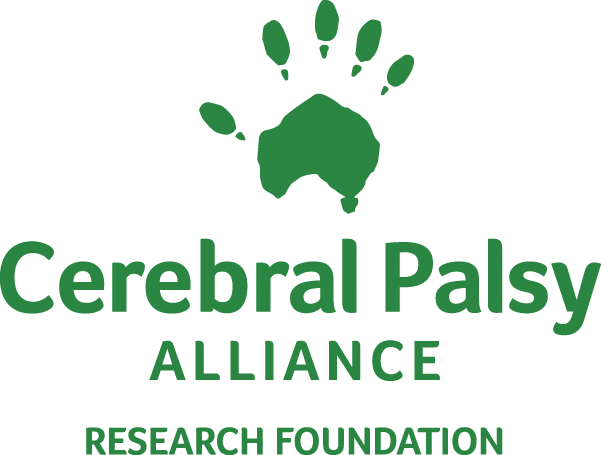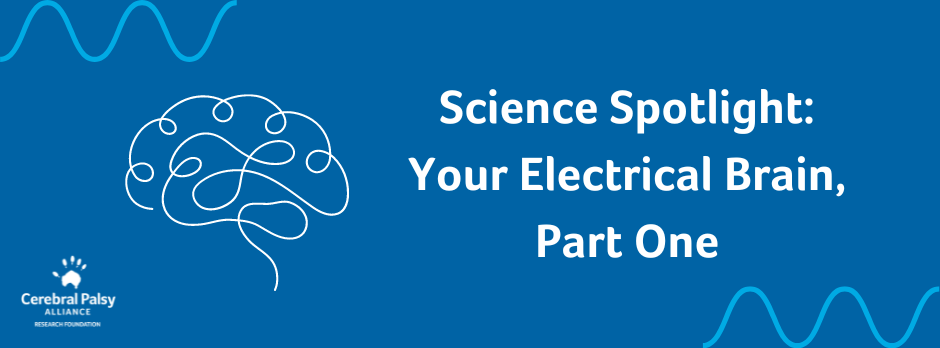Fri 26 Apr 2024
Thu 11 Apr 2024
Evan Y. Snyder
University of California, San Diego, California
Evaluating the synergistic vs. antagonistic actions of human neural stem cells in combination with hypothermia for neuroprotection in perinatal hypoxic-ischemic brain injury
Lack of blood flow and oxygen to the newborn brain (called “hypoxic-ischemic injury [HII]”) remains a devastating and common problem with serious life-long neurological sequelae, including CP, severe motor, sensory, and cognitive impairment, epilepsy, learning disabilities, and autistic behaviors. The cost to the economy is ~US$ 1 million-per-child in terms of life-long medical and rehabilitative care. The indirect costs based on the impact on family dynamics is 2-5-fold more. Presently there is no treatment or even an accurate predictor. The latest clinical intervention is head/body cooling which only helps modestly for moderate HII and only if started within the 1st 6 hours of life, meaning that many babies miss even this sub-optimal therapy. We have strong evidence that neural stem cells may rescue and protect endangered regions of the brain subjected to HII. We have also devised a brain imaging strategy for monitoring the evolution of the injury, selection of appropriate patients, and tracing improvement. Any new interventions for HII, however, must be coordinated with cooling which is now standard-of-care. Yet, it is not known how to coordinate the administration of these 2 modalities in a way that enables them to work additively with each other and not antagonistically. Once we have answered this question, we are prepared to request permission from the FDA to launch a clinical trial in babies at high risk for CP. There is a dire need for better, later, and more broadly-applicable treatments against HII that more elegantly target injurious processes. Were there a treatment that reduces the morbidity associated with neonatal HII, the benefits for affected infants and children, their families, and society would be enormous. In addition, brain imaging paradigms used in this proposal could be applied to many acquired or degenerative neural diseases of all ages.
Terence Sanger, MD, MPH
University of Southern California
Grant 2016
A New Method for Identifying Optimal Targets for Deep Brain Stimulation in Children With Cerebral Palsy and Secondary Dystonia
Children with cerebral palsy and other acquired or genetic disorders can develop severe movement disorders including dystonia, chorea, or myoclonus. These disorders have minimal effective medical treatments, and children can end up trapped within their bodies, unable to move, speak, or communicate because they do not have control of their muscles. Deep-brain stimulation (DBS) can treat some children with movement disorders, using a wire inserted into the brain, connected to an implanted pacemaker, to block the abnormal signals.
DBS has the ability to cure dystonia, and to allow children to walk or communicate for the first time in their lives. But for most children we do not know where in the brain to put the wire, and as a result many children only receive partial or minimal benefit, even after such a complex neurosurgical procedure.
Nathalie Linda Maitre
Nationwide Children’s Hospital, Columbus, Ohio
RCT of Feeding intervention with Pacifier Activated Device and Mother’s Voice in Infants at High-risk for Cerebral Palsy
Children with/at high-risk for CP have frequent feeding problems, such as dysphagias, chronic aspiration and abnormal feeding behaviors. These disorders often result in morbidities during infancy and have a profound impact on family/community participation and development into adulthood. Evidence for behaviorally-based feeding interventions ranges from insufficient to moderate, pointing to a clear need for rigorous studies. To address these needs and in keeping with research priorities of the Cerebral Palsy Alliance, the current proposal will determine the efficacy of non-nutritive suck (NNS) training using a pacifier-activated device (PAM) with mothers’ voice to condition suck-strength and rhythmicity, in improving the feeding and developmental outcomes of infants at high-risk for CP.
Vedant A. Kulkarni
Shriners Hospitals for Children Northern California Sacramento, California
Smartphone App to Enable Community-Based Hip Surveillance for Children with Cerebral Palsy
Hip surveillance for children with cerebral palsy can significantly decrease the morbidity of hip displacement and maintain hip function. While hip surveillance programs have been effective in countries with centralized medical systems, application of hip surveillance guidelines to medical systems with less organization may require a more novel community-based approach. We have developed and preliminarily validated a free app called “HipScreen” (www.hipscreen.org) that contains information on hip surveillance adapted from the Australian Hip Surveillance Guidelines for Children with Cerebral Palsy 2014, protocols for proper radiograph acquisition, and a tool for measuring radiographs directly from the device screen. We aim to establish the validity of the app-based measurement of radiographs in users with experience in radiographic interpretation, and to demonstrate the effectiveness of a free online video-based tutorial to teach users without experience in radiographic interpretation to accurately interpret hip surveillance radiographs using the HipScreen app. With nearly 70% of the global population having access to a smartphone by 2020, a validated app for hip surveillance would allow hip surveillance to have global impact.
Shenandoah Robinson
John Hopkins University, Baltimore, Maryland
Making the Most of Mother Nature: Neonatal Combinatorial Therapy with Endogenous Neurorepair Agents
This proposal addresses the Cerebral Palsy Alliance’s mission to identify novel therapeutic strategies for rapid translation to children with CP. Given that many children with CP have sensorimotor and cognitive deficits, there is a need to study strategies that address both functional pillars. The combination of erythropoietin and melatonin proposed here is directly translatable, given that both agents are currently administered to children in lower doses. Both agents are safe for use in infants, and capitalize on endogenous central nervous system (CNS) repair mechanisms. Notably, due to inherent balances in signalling, exploitation of endogenous repair mechanisms is not likely to derail neurodevelopment programming in infants. This proposal will also yield high-impact data on the cause of cerebral palsy, including spinal mediation of selective motor control and spasticity, and cognitive deficits, and thus aligns with the Alliance’s strategic priorities. To minimize the impact of CP, motor and cognitive outcomes must be addressed. Thus, the goal of this preclinical investigation is to test the impact of complementary mechanisms of erythropoietin and melatonin on function (Aim1), molecular pathways (Aim2) and clinically-relevant biomarkers (Aim3) in a rigorous preclinical model, to pave the way for a phase II clinical trial in the next 4 years.
Jane Huggins
University of Michigan, Ann Arbor, Michigan
Innovative Assessment of Receptive Language in People with Cerebral Palsy who are nonverbal: A Comparison of Eye-Gaze Interface and Brain-Computer Interface Test Administration Methods
People with neurodevelopmental conditions that include significant impairments in movement and speech are at high risk for comorbid cognitive impairments and learning disabilities. The motor and communication demands of standardized cognitive assessments make them inaccessible to people with the greatest need for accurate assessment. Misclassification of cognitive function for individuals with cerebral palsy (CP) can result in inadequate or inappropriate medical interventions or educational planning. Long-term negative consequences of underestimating capabilities or needs are incalculable. Eye-Gaze Interfaces (EGIs) and Brain-Computer Interfaces (BCIs) are assistive technology devices for individuals with CP that facilitate communication with limited or no volitional motor response demands. While both EGI and BCI create cognitive testing strategies requiring little or no physical ability, they differ in equipment and set-up, physical ability required, and access provided.
Zinaida Vexler
University of California, San Francisco, California
Mesenchymal stem cells-derived extracellular vesicles for repair after neonatal stroke
More than half of all children with cerebral palsy (CP) are born at term. Perinatal arterial ischemic stroke is a major cause of CP. There are no effective treatments. It is recognized that brain immaturity affects both injury and recovery after stroke and that future studies should be focused on enhancing brain repair, not acute protection. In an age-appropriate rat model of perinatal focal arterial stroke, we demonstrated that delayed administration of mesenchymal stem cells (MSC) improves long-term functional outcomes. A recently discovered conceptually novel principle of cell-cell communication, via release and uptake of extracellular vesicles (EV), has changed the perception of drug targets. EV signal by carrying/delivering cytokines/chemokines, miRNA, and growth factors. Therapeutic potential for MSC-derived EV in neonatal stroke is unknown. We hypothesize that MSC-derived EV carry long-term therapeutic effects after neonatal stroke.
Donna Ferriero
University of California, San Francisco, California
Metabolomic identification of at risk newborns
Therapeutic hypothermia (TH), while being standard of care for hypoxic-ischemic encephalopathy (HIE), provides protection for only 60% of babies. The overarching hypothesis is that the metabolic state of the brain immediately after TH differs markedly between hypothermia responders and non-responders. Changes in intracellular “metabolic fingerprints”, or metabolomics, can identify tissues at risk for continued energy failure and injury. The newly developed Hyperpolarized carbon-13 (HP-13C) MRI offers the ability to detect metabolic changes in near real-time. Pre-clinical animal studies are still needed to determine and evaluate the physiological differences between adults and pediatric patients as well as varying disease conditions.
Jane Huggins
University of Michigan, Ann Arbor, Michigan
Smartphone App to Enable Community-Based Hip Surveillance for Children with Cerebral Palsy
This career development award will support Assistant Professor Huggins’ travel, as a brain-computer interface (BCI) researcher, to build collaborations with cerebral palsy (CP) researchers. The travel will create connections with CP researchers at the American Academy for Cerebral Palsy and Developmental Medicine’s (AACPDM) Annual Meeting, Sept 12-16, 2017, in Montreal, Canada. Travel to the Cerebral Palsy Alliance in Sydney will coordinate with a successful Project Grant application to the Research Foundation of the Cerebral Palsy Alliance to compare BCI and eye-gaze. That visit will finalize data analysis and plan future collaborations on providing access to communication and cognitive assessment for people with CP.



